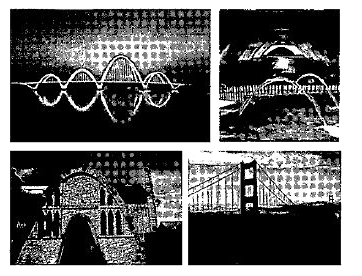If the sum of the roots is -p and product of the roots 1p is, then the quadratic polynomial is:
k(−px2+xp+1)
k(−px2+xp−1)
(x2+px−1p)
k(x2−px+xp)
The correct Answer is:C
To find the quadratic polynomial given the sum and product of its roots, we can use the standard form of a quadratic polynomial with roots α and β:
P(x)=x2−(α+β)x+αβ
Given:
- Sum of the roots, α+β=−p
- Product of the roots, αβ=1p
Let's substitute these values into the standard form of the quadratic polynomial.
1. Write the general form of the quadratic polynomial:
P(x)=x2−(α+β)x+αβ
2. Substitute the given sum of the roots:
α+β=−p
So, the polynomial becomes:
P(x)=x2−(−p)x+αβ
Simplifying the middle term:
P(x)=x2+px+αβ
3. Substitute the given product of the roots:
αβ=1p
So, the polynomial becomes:
P(x)=x2+px+1p
Thus, the quadratic polynomial is:
P(x)=x2+px+1p
- Sum of the roots, α+β=−p
- Product of the roots, αβ=1p
P(x)=x2−(α+β)x+αβ
α+β=−p
So, the polynomial becomes:
P(x)=x2−(−p)x+αβ
Simplifying the middle term:
P(x)=x2+px+αβ
αβ=1p
So, the polynomial becomes:
P(x)=x2+px+1p
P(x)=x2+px+1p
Topper's Solved these Questions
- SAMPLE PAPER 6BOOK - OSWAL PUBLICATIONCHAPTER - SAMPLE PAPER 6EXERCISE - Section - A
6 Videos
- SAMPLE PAPER 6BOOK - OSWAL PUBLICATIONCHAPTER - SAMPLE PAPER 6EXERCISE - Section - B
5 Videos
- SAMPLE PAPER 5BOOK - OSWAL PUBLICATIONCHAPTER - SAMPLE PAPER 5EXERCISE - Section -C
2 Videos
- SAMPLE PAPER 7BOOK - OSWAL PUBLICATIONCHAPTER - SAMPLE PAPER 7EXERCISE - Section -C
7 Videos
Similar Questions
The below picture are few natural examples of parabolic shape which is represented by a quadratic polynomial. A parabolic arch is an arch in the shape of a parabola. In structures, their curve represents an efficient method of load, and so can be found in bridges and in architecture in a variety of forms.

If the sum of the roots is -p and product of the roots is −1p , then the quadratic polynomial is
View SolutionThe below pictures are few natural examples of parabolic shape which is represented by a quadratic polynomial. A parabolic arc is an arc in the shape of a parabola. In structures, their curve represents an efficient method of load, and so can be found in bridges and the architecture in a variety of forms.
If the sum of the roots is −p and the product of the roots is −1p then the quadratic polynomial is

View Solution
Knowledge Check
If sum of the roots is -2 and product of the roots is −15,
A1. both the roots lie on the right-side of the V-axisB2. both the roots lie on the left-side of the Z-axisC3. roots lie on both the sides of thq X-axisD4. one root is zero and another root is imaginary number.If sum of the roots is −11 and product of the roots is 24,
A1. both the roots He right-side of the X-axisB2. both the roots lie left-side of the Y-axis.C3. roots lie on both the sides of the Y-axisD4. one root is zero and another root is imaginary numberIf sum of the roots of a quadratic equation is 7 and product of the roots is 12. Find the quadratic equation.
Ax2+7x+12=0Bx2−7x+12=0Cx2−7x−12=0Dx2+7x−12=0
If x2−5x+p=10 and product of roots is -4 then p=
View SolutionIf sum of the roots of a quadratic equation is 1 and product of the roots is −20. Find the quadratic equation.
View SolutionIn a quadratic equation ax2−bx+c=0,a,b,c are distinct primes and the product of the sum of the roots and product of the root is 919. Find the difference between the sum of the roots and the product of the roots.
View SolutionIf sum of the roots of a quadratic equation is 1 and product of the roots is −20. Find the quadratic equation.
View SolutionThe sum of zeroes of quadratic polynomial is −√2 and product is 7, that quadratic polynomial is :
View Solution
